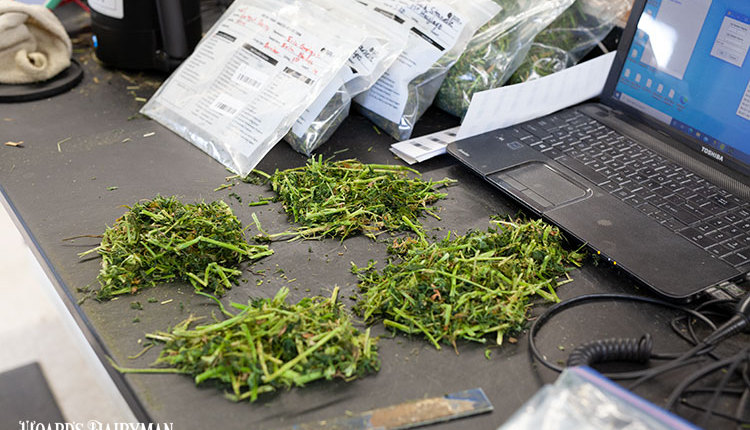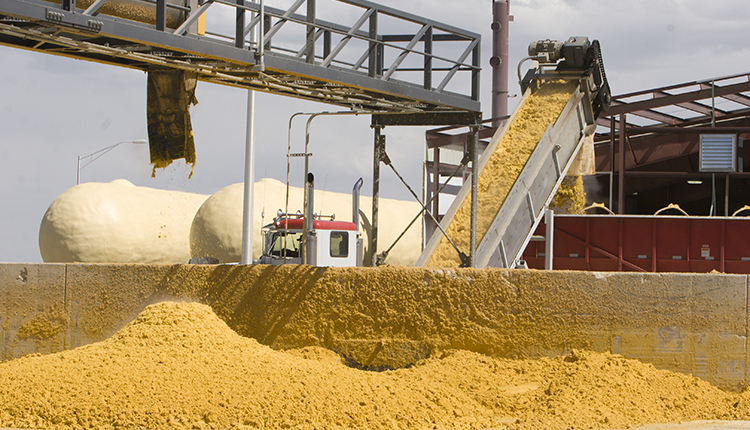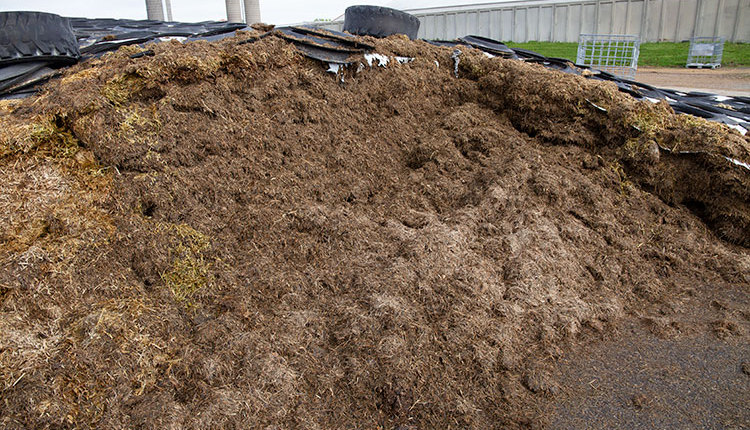
Feed and forage testing opportunities have advanced significantly in recent years. For a comparatively small investment, one can obtain comprehensive information about forage that comprises a large part of the diet dry matter.
Feed labs continue to add evaluations. There is some valid concern that the large amount of information on a feed report obscures the critical information that should be focused on. Some of these evaluations may not be as accurate as traditional tests for protein, acid detergent fiber (ADF), and neutral detergent fiber (NDF) but have much value as “qualitative” evaluations. However, the breadth of information provided helps the dairyman and nutritionist understand the “story” behind the forage. Understanding that story provides much potential value.
A complete forage test analysis should tell a story. It should allow the user to infer information about various aspects of the growth, harvest, and storage characteristics of the forage. Everything from agronomics to harvesting and ensiling conditions can be read as part of the story. The various analyses from a forage report should complement each other and lead to a consistent story.
To gain a better understanding
If data from the forage report does not make sense, consider the following approach:
- Review the full analysis. If something is not as expected, are there other values that are out of range indicating that the sample is unusual?
- Most labs provide range statistics with their reports. Some provide graphical reports that allow you to evaluate quickly whether certain constituents are out of line. If a particular nutrient is significantly different from the average for the crop, there are usually other nutrient values that do not line up.
- Consider what you know about the forage material. Was there something unusual about crop growing or harvesting conditions? Was the material harvested unusually wet or dry, or if the forage was wilted, was it rained on?
- Some labs take pictures of incoming samples as supportive information. Go online and review the sample picture. Is the material consistent with what you believe was sampled? Zoom in and look at specific sample characteristics.
Seek a second opinion
If the pieces do not come together and make sense, then reach out to your laboratory. Take the position of “help me understand why this information is presenting in this manner” instead of assuming that the lab made a mistake.
Here are several examples from actual forage analysis reports of unusual data that tells an unusual but plausible story.
Concern: “This corn silage analysis is crazy . . . the lab must have really messed up.”

Comment: This corn silage sample may have been taken from the front of a bunker, perhaps on the leading edge. It appears that water migrated through the sample either at ensiling or during storage and leached out soluble nutrients. This type of analysis is not generally representative of the whole silage pile. Work back through the face of the bunker and resample.
Concern: “My alfalfa never tests this low in protein. This can’t be correct!”

Comment: This material was probably harvested at typical protein levels. Understanding what may have occurred with this forage would require a fermentation analysis, which is not always requested. Note the high ash. A potential scenario is that this material experienced significant rain while wilting. Rain splatter would have thrown soil on to the forage material, inoculating it with clostridial bacteria. Sugar necessary for generating a good fermentation was respired and lost. High ash will distort forage analysis values and the protein will look lower than expected. The high level of ammonia from protein breakdown due to poor fermentation (high butyric acid) will be lost during the laboratory drying process, leading to lower protein analysis.
Concern: “The mineral analysis on this alfalfa silage does not make sense! The calcium is higher than the potassium, and the magnesium level is unbelievably high!

Comment: Our laboratory analyzes quite a few hay crop samples where calcium is elevated, potassium is extremely low, and magnesium may or may not be elevated. Certain soil conditions will lead to the plant pulling alternative cations to potassium, and immature grasses may show similar mineral results. This pattern of minerals is often seen in Western alfalfa hay, which may be marketed as “DCAD” or reduced dietary cation-anion difference hay.
Bottom line
The breadth of forage evaluation data provides a unique opportunity to understand the story that is locked behind the forage comprising cattle diets. Understanding this story allows the producer to work toward improvements in forage production and provides information for best incorporation of forage into rations.








